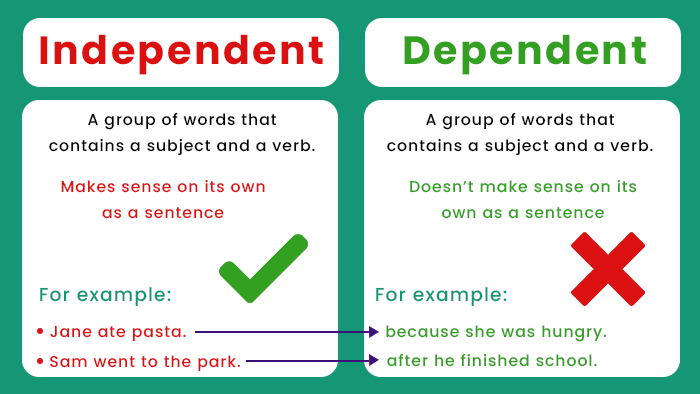Chapter 13-Sentence Boundaries
Clear sentence structure depends on establishing where one sentence ends, and the next one begins. We define sentences that are complete by the “fancy” term “independent clause.” The clause is called independent if it includes a subject, a verb, and a complete thought. Sentences may contain two independent clauses and one or more dependent clauses joined with appropriate conjunctions and/or punctuation.
Before we go any further, it’s important that you know the difference between two major types of clauses.
Independent clause–a complete sentence; it has a subject, verb, AND a complete thought.
Dependent clause–is not a complete sentence; must be connected with an independent clause.

One of the most common issues when writing (for both native and non-native speakers) involves errors in sentence boundaries or the incorrect combining of clauses. There are three types of sentence boundary errors:
- Fused sentences
- Comma splices
- Fragments

Fused Sentences
Fused sentences are a type of run-on sentence and occur when multiple independent clauses are combined but do not have correct punctuation. This is the easiest type of sentence boundary error to spot for most writers.
Examples:
I need to go to the store I need to buy eggs and bread.
She missed the bus she was late to work.
Although it rained yesterday, he still went to the beach he had a great time.
**Can you correct the errors?
Comma Splices
Commas splices are another type of run-on sentence. Comma splices occur when independent clauses are joined incorrectly with a comma. Note–you CANNOT (no, never!) join two independent clauses with a comma alone.
Examples:
I need to go to the store, I need to buy eggs and bread.
She missed the bus, she was late to work.
Although it rained yesterday, he still went to the beach, he had a great time.
**Can you correct the errors?
Fragments
Sentence fragments are exactly what you might think they are. Consider the meaning of the word “fragment.” It means a piece or a portion of a larger item. Likewise, a sentence fragment is a piece of a larger sentence.
A sentence fragment occurs when the sentence is treated as complete or independent, but it is not. It may be missing a subject, verb, or a complete thought.
Examples:
Went to the store.
I couldn’t wait for.
She was excited to go but.
Such as history, math, and science.
**Can you correct the errors? What is each sentence missing?

Chapter Exercise
Directions: Identify each type of sentence boundary errors (fused, comma splice, or fragment), and correct it.
- I went to the store bought some groceries.
- She opened the book it was filled with colorful illustrations.
- They went for a walk in the park, they saw a beautiful sunset.
- He played the guitar sang his favorite song.
- We had a picnic at the beach the weather was perfect.
- The teacher explained the concept, the students listened attentively.
- Finishing his meal then went for a jog.
- The car broke down in the middle of the road they had to call for assistance.
- She packed her bags, booked a flight to Paris.
- We visited and learned about ancient.
